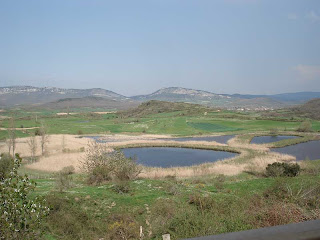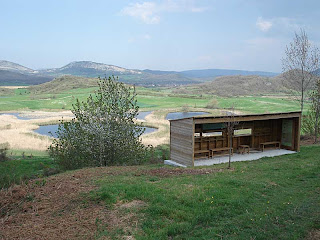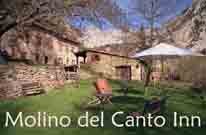
One of the splits more controverted on species in the Iberian peninsula is the one that took on the Phylloscopus collybita, split accepted by the rarities committees and that in Spain, have taken to ornithologists to take extra precautions to separate the new species, the Common Chiffchaff (Phylloscopus collybita) and the Iberian Chiffchaff (Phylloscopus ibericus), denominated firstly like P. brehmii.
Still the discussions on the different identifications continue in diverse ornithological sites, forums etc...
In the field, in a typical observation, these two species are practically indistinguishable, although there are authors who indicate subtle differences in the color of the plumage.
Nevertheless, when we listened to it’s different songs we can determine as of both we are listening, that yes, whenever they emit his normal songs, since mixed songs can be listened, that can mistake.
The song of the Iberian Chiffchaff is a song faster, and normally shorter than the Common Chiffchaff , and that it finalizes with a very characteristic trill.
Still the discussions on the different identifications continue in diverse ornithological sites, forums etc...
In the field, in a typical observation, these two species are practically indistinguishable, although there are authors who indicate subtle differences in the color of the plumage.
Nevertheless, when we listened to it’s different songs we can determine as of both we are listening, that yes, whenever they emit his normal songs, since mixed songs can be listened, that can mistake.
The song of the Iberian Chiffchaff is a song faster, and normally shorter than the Common Chiffchaff , and that it finalizes with a very characteristic trill.
Look here!
The song of the Common Chiffchaff is slower and longer in the time, giving the sensation of which is sadder.
In several zones of the north of Spain it is easy to listen several of these mixed songs.
The song of the Common Chiffchaff is slower and longer in the time, giving the sensation of which is sadder.
In several zones of the north of Spain it is easy to listen several of these mixed songs.
The origin of these songs, is difficult to attribute to the species exactly, some ornithologists, attribute these songs to imitations of Common Chiffchaff , others say that they are imitations of Iberian Chiffchaff , and many we decided on the sensation and the intuition to attribute to certain songs to a species or another one.
In order to clarify many of these doubts, the Iberian Ringning Group – Grupo Ibérico de Anillamiento. GIA - , it has prepared the first congress on the Iberian Chiffchaff , that will be celebrated in Riello (León), from 11th to 13th of May and that has great specialists of this species, Lars Svensson, José Luis Copete, Gozalo Elias, Alejandro Onrubia, Alfonso Balmori, …aspects on morphology, songs, distribution etc…. will treat.
Let us hope that the conclusions contribute means to us to differentiate these difficult species.
In order to clarify many of these doubts, the Iberian Ringning Group – Grupo Ibérico de Anillamiento. GIA - , it has prepared the first congress on the Iberian Chiffchaff , that will be celebrated in Riello (León), from 11th to 13th of May and that has great specialists of this species, Lars Svensson, José Luis Copete, Gozalo Elias, Alejandro Onrubia, Alfonso Balmori, …aspects on morphology, songs, distribution etc…. will treat.
Let us hope that the conclusions contribute means to us to differentiate these difficult species.
You have more information HERE (PDF file)


 Garganey
Garganey
 Whinchat
Whinchat























